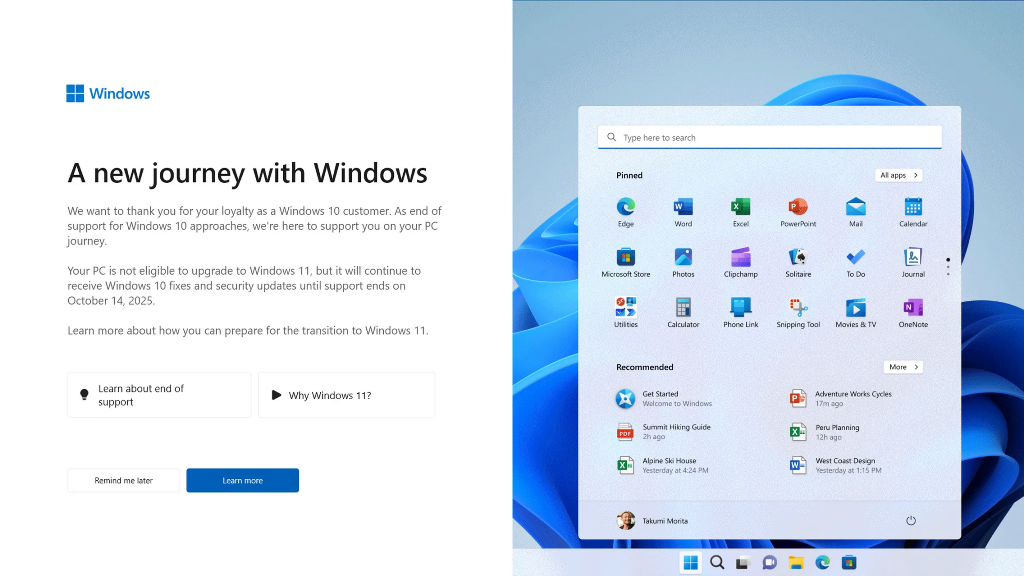Microsoft is trying to convince Windows 10 users to upgrade with full-screen prompts
Microsoft is trying to convince Windows 10 users to upgrade with full-screen prompts
Users have 18 months left until end of support - and Microsoft has begun encouraging them to buy a new PC or upgrade.
Published on 15th April 2024
Microsoft is trying to entice Windows 10 users to upgrade to Windows 11 with fullscreen prompts 18 months before the end of support cutoff. Reddit user Woopinah9 spotted a notification “while in the middle of working,” where Microsoft thanks Windows 10 “customers” for their loyalty with a full-screen message and then explains the end of support date. You might be expecting a free upgrade as part of this interruption, but unfortunately for this Reddit user, their PC can’t upgrade to Windows 11, so it’s more “hey check out this cool thing we have! oh but you cant have it,” as one Redditor puts it.
While Some Windows 10 users will see this prompt and be able to upgrade to Windows 11, this Reddit user, in particular, has one of the many millions of PCs that isn’t able to upgrade due to Microsoft’s hardware requirements for Windows 11. “Your PC is not eligible to upgrade to Windows 11, but it will continue to receive Windows 10 fixes and security updates until support ends on October 14th, 2025,” reads Microsoft’s message.

The prompt also includes links to end of support articles and a promotional link for Windows 11. The options to dismiss the full-screen interruption include “learn more” and “remind me later” buttons, which suggests that this prompt might appear more than once. We’ve reached out to Microsoft to clarify whether this is a one-time notification or whether Windows 10 users should expect to see regular notifications like this over the next 18 months.
Surprisingly, Microsoft’s full-screen prompt doesn’t directly mention that consumers will be able to continue securely using the operating system beyond October 14th, 2025, if they’re willing to pay. Microsoft revealed last week that it will cost businesses $61 per device for the first year of Extended Security Updates (ESU) for Windows 10. This then doubles to $122 for the second year and then doubles again in year three to $244.
Microsoft hasn’t detailed ESU pricing for consumers yet, but the company did previously reveal it will offer these extended updates to consumers for the first time ever. Schools will be offered a big discount, with Microsoft offering a $1 license for year one, which then doubles to $2 for year two and doubles again to $4 for the third year. Hopefully, non-business users of Windows 10 will get similar discounts, but Microsoft says it will share details “at a later date.”
Microsoft used similar prompts for Windows 10 upgrades in 2016. The software maker had to tweak its Windows 10 upgrade notification prompts just months later following complaints about how confusing the upgrade experience was. Last year, Microsoft quickly fixed an issue where “ineligible” PCs were offered an “inaccurate upgrade to Windows 11.” The mistake led to some prompts for upgrades on devices that didn’t meet the Windows 11 minimum system requirements, but the upgrade never installed.
Windows 11 is only supported on CPUs released from 2018 onward and with devices that support TPM security chips integrated into the latest CPUs. As a result, Windows 11 uptake has been slower than Windows 10, which was also offered to Windows 7 and Windows 8 users as a free upgrade.
Source
Image Credit
The Verge












